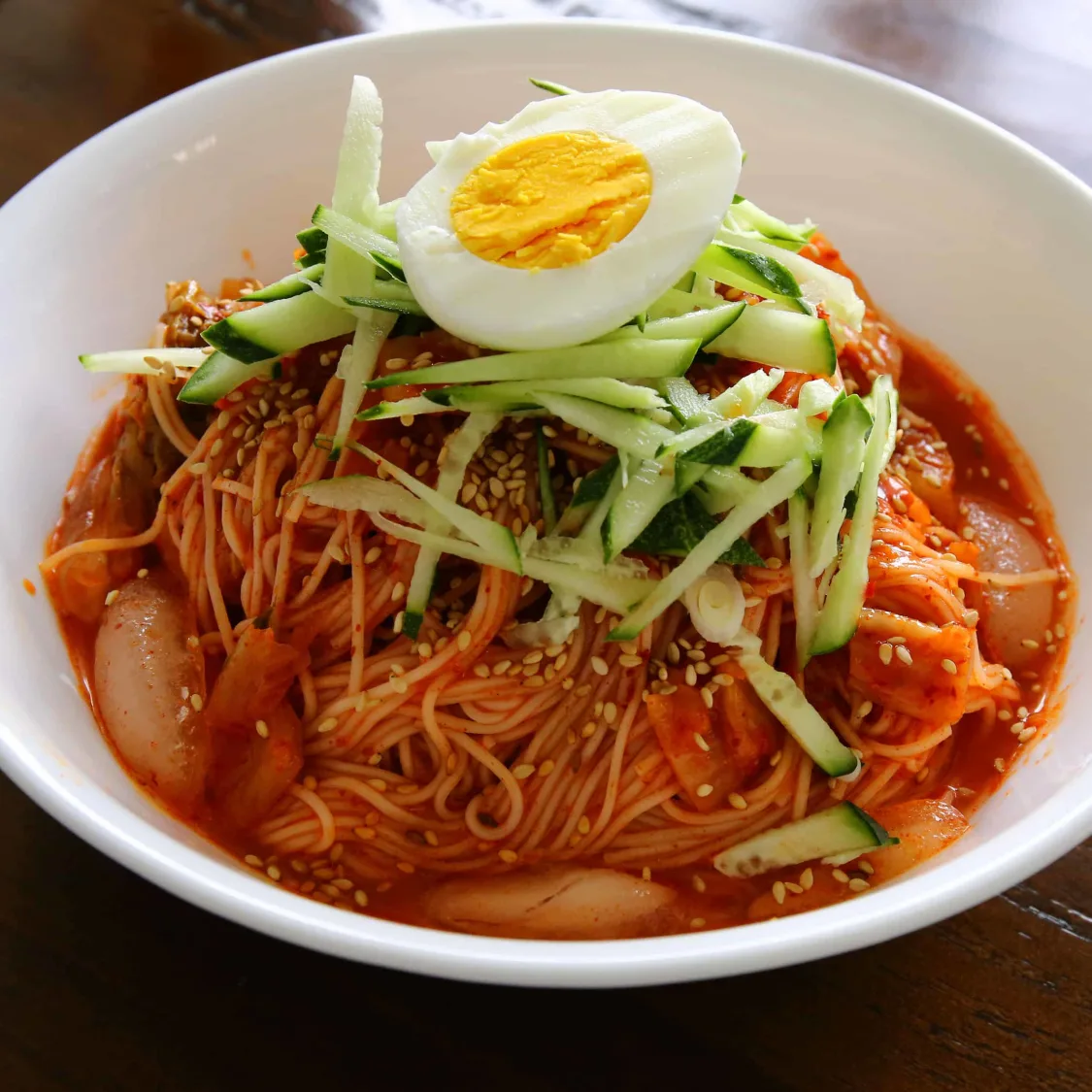
Bibim-guksu
Cold noodles mixed with a spicy and tangy sauce, often served with vegetables and boiled egg.
Ingredients
- •Noodles
- •Gochujang
- •Vinegar
- •Sugar
- •Sesame oil
- •Cucumber
- •Carrot
- •Boiled egg
Instructions
Cook Noodles
Cook noodles according to package instructions and rinse in cold water
Prepare Sauce
Mix gochujang, vinegar, sugar, and sesame oil to make the sauce
Combine
Toss noodles with sauce and add sliced cucumber, carrot, and boiled egg
Serve
Serve chilled and enjoy
Bibim-guksu is a refreshing Korean dish that features cold noodles mixed with a spicy and tangy sauce, often accompanied by fresh vegetables and a boiled egg.
This dish is particularly popular during the hot summer months in Korea, providing a cool and invigorating meal that helps beat the heat. The combination of chewy noodles and the flavorful sauce makes it a favorite among many.
To make Bibim-guksu, start by cooking the noodles according to the package instructions, then rinse them in cold water to stop the cooking process and cool them down. Next, prepare the sauce by mixing gochujang, vinegar, sugar, and sesame oil. Toss the cold noodles with the sauce until they are well coated. Add sliced cucumber, carrot, and a boiled egg for added texture and flavor.
There are many ways to customize Bibim-guksu to suit your taste. You can adjust the level of spiciness by adding more or less gochujang, or include other vegetables like lettuce or radish. Some people also like to add a touch of soy sauce or garlic to the sauce for extra depth of flavor.
In Korea, Bibim-guksu is typically served chilled, making it a perfect dish for hot weather. It is often enjoyed as a light meal or a side dish, and pairs well with other Korean dishes like kimchi or grilled meats.
While Bibim-guksu is a delicious and refreshing dish, it is also relatively healthy. The vegetables provide essential vitamins and minerals, while the noodles offer a good source of carbohydrates. However, be mindful of the sodium content in the sauce, especially if you are watching your salt intake.
